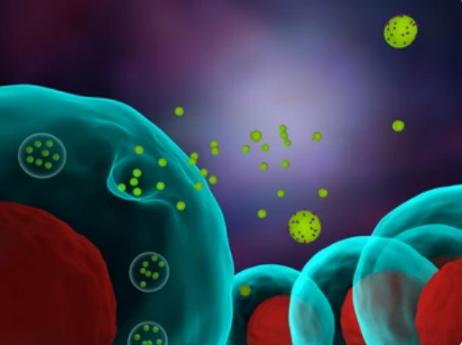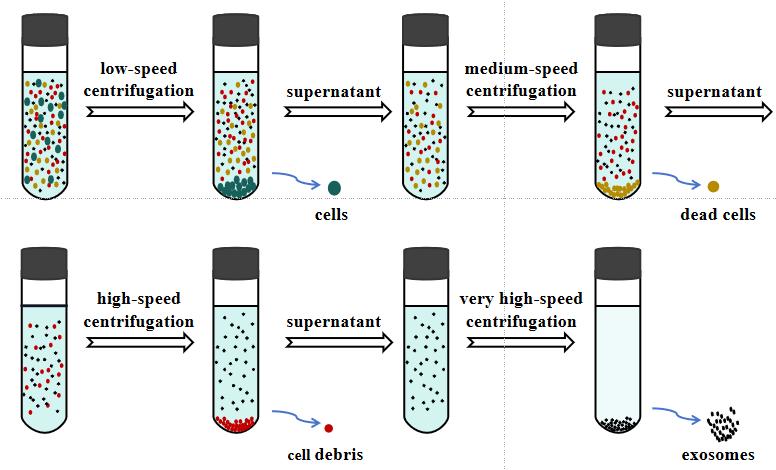Exosome Isolation and Purification Services
Inquiry

Exosomes are membrane-bound vesicles with a diameter of approximately 30-150 nm that are released by a wide variety of cell types into the extracellular compartment by exocytosis. They possess a lipid bilayer membrane structure and contain DNA, RNA, proteins, lipids, and small molecule metabolites that play important roles in cell communication and are closely related to the occurrence, development, treatment, and prognosis of various diseases. The clinical diagnosis and treatment prospects of exosomes are extremely promising, and in recent years, they have become one of the hot spots in biomedical research. The first step in studying exosomes is to isolate them from biological fluids or cell culture media.
CD Formulation has rich experience in the isolation and purification of exosomes and can perform separation and purification of various samples. We have a variety of exosome isolation and purification techniques, including differential ultracentrifugation, density gradient ultracentrifugation, size exclusion chromatography, immunoaffinity, etc. We provide professional exosome isolation services that provide strong support for life science and medical research as well as the pharmaceutical industry.
Our Methods for Exosome Isolation and Purification
Differential Ultracentrifugation
The principle of differential ultracentrifugation is based on the size and density differences between exosomes and impurities in the sample. Differential ultracentrifugation is the most commonly used method for exosome isolation and purification, with advantages such as mature technology, applicability to the separation of most samples, and low operating costs.
 Fig.1 Schematic diagram of isolation and purification of exosome based on differential ultracentrifugation.
Fig.1 Schematic diagram of isolation and purification of exosome based on differential ultracentrifugation.
Density Gradient Ultracentrifugation
Similar to differential centrifugation, density gradient centrifugation separation is still based on size and density. However, density gradient centrifugation occurs in the presence of a pre-constructed continuous density gradient from low to high in the centrifuge tube (typically made of sucrose or iodixanol). The specific steps are also to remove large impurities through low-speed centrifugation, then add the sample to the top of the separation medium for ultracentrifugation, and collect exosomes through fractional collection.
Size Exclusion Chromatography (SEC)
Size exclusion chromatography is a separation method based on molecular size. The chromatography column is filled with stable polymer beads to form a porous matrix. When adding the solution containing exosomes to the SEC chromatography column, the smaller particles will be trapped in the pores, while the larger particles will not enter the pores and will be eluted first. Therefore, the elution solution at different stages will contain particles of different sizes, firstly large particles, followed by small particles.
Immunoaffinity is a technique for separating and purifying biological particles based on the antigen-antibody specific reaction. Exosomes have specific markers on their surface, such as CD9, CD81, CD63, etc. After incubating with magnetic beads coated with antibodies, exosomes can be adsorbed and separated by binding to the beads.
At the function of PEG, exosome solubility is reduced to allow exosome precipitation. Then exosomes can be simply obtained by low-speed centrifugation or filtration.
Ultrafiltration is a separation method based on molecular size, using ultrafiltration membranes with different molecular weight cutoff (MWCO) for selective separation. Small molecular substances are filtered to the other side of the membrane, while high molecular weight substances larger than the membrane pore size are retained on the ultrafiltration membrane.
CD Formulation has rich experience in the exosome isolation and purification, and can provide a variety of exosome separation and purification technologies. With our extensive experience in exosomes, state-of-the-art equipment and dedicated team, you can rely on the exosome research service expertise of the CD Formulation. In addition, we can also provide a one-stop service for exosome extraction, identification, and subsequent functional experiments. If you have relevant needs, please feel free to contact us! We look forward to working with you.
Related Services




 Fig.1 Schematic diagram of isolation and purification of exosome based on differential ultracentrifugation.
Fig.1 Schematic diagram of isolation and purification of exosome based on differential ultracentrifugation.